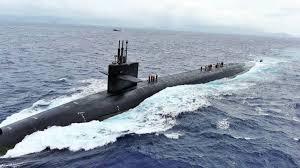Don't wanna be here? Send us removal request.
Text
The radios are designed for easy light pole
400g

0 notes
Text
100% Ready Plot
Everybody is earnestly invited to visit Ready Plot at Uttara Probortan City which Approved by Bangladesh Government.Transport facilities are available from Company for Project visit. If you want more information about Ready Plot Sales,You can knock facebook Page at Jomibecha BD.

0 notes
Text
The most important thing for networking is simple
juniper

0 notes
Text
Key Features of Barracuda Email Protection
email protection
youtube
0 notes
Text
Full visibility of signal levels, allowing for quick changes
400g

0 notes
Text
Arista DCS-7050S-52-F 7050S Series
Arista DCS
youtube
0 notes
Text
Underwater, large batteries and electric motors could power
400g

0 notes
Text
A notable German submarine development
World War 2 was the snorkel device (anglicized by the US Navy to "snorkel"). The invention was attributed to Dutch officer Lieutenant Jan J. Wichers, who in 1933 proposed the idea of a breathing tube to supply fresh air to the submarine's diesel engines while traveling underwater. The Dutch Navy began using snorkels in 1936, and some fell into German hands in 1940. With the introduction of radar to detect surfaced submarines, Germany equipped hundreds of submarines with snorkels to allow their diesel engines to operate at periscope depth (to recharge the batteries for underwater propulsion). This increased the chances of detection by radar-equipped ships and Allied aircraft.
During the Pacific War, the Japanese military deployed a large number of submarines of various sizes and types, including carrier submarines, midget submarines, and "manned torpedo" submarines mounted on larger submarines. The Japanese I-201 class submarines were fast diesel-powered submarines, 259 feet long, displacing 1,291 tons, and capable of 15 knots on the surface. Underwater, large batteries and electric motors could power the vessels at a speed of 19 knots for almost an hour. Each boat was equipped with two 25 mm guns and four forward torpedo tubes, carrying ten torpedoes.

The highly successful U.S. submarine campaign in the Pacific War was fought primarily with Gato and Balao class submarines. She was approximately 311.5 feet long, displaced 1,525 tons, and was powered by diesel-electric engines capable of a speed of 20 knots on the surface and 9 knots submerged. The main difference between the two designs was that the Gato class boats had an operating depth of 300 ft, while the Balao boats had an operating depth of 400 ft. These submarines carried a crew of 65 to 70 men and were equipped with one or two 5-inch deck guns as well as smaller anti-aircraft weapons, ten torpedo tubes (six forward and four aft) and carried 24 torpedoes.
0 notes
